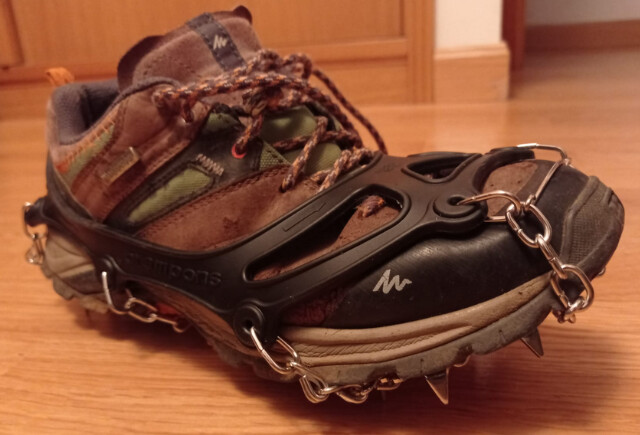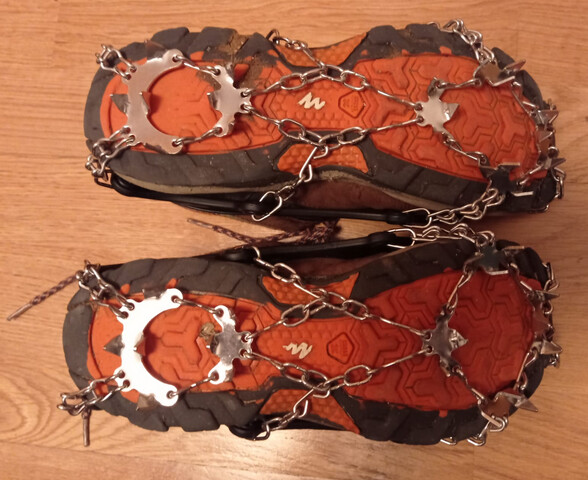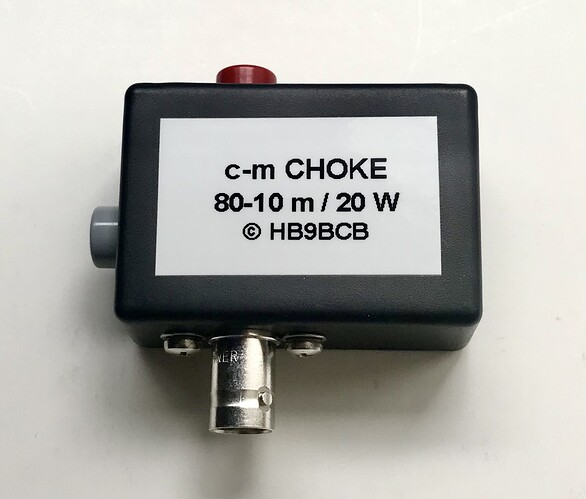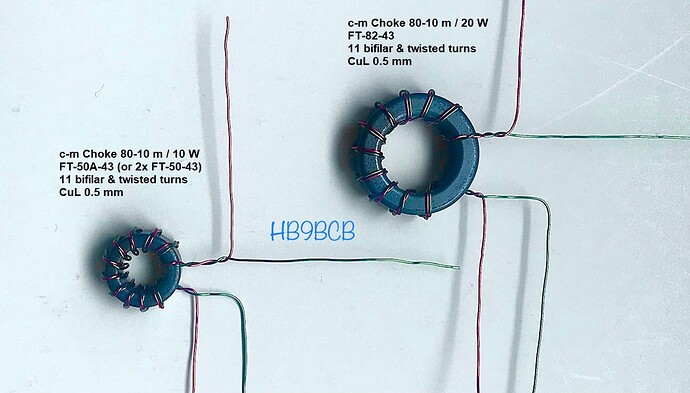First of all, I want to dedicate this successful activation to the glory and memory of a well known EA2 chaser who passed away on Friday night. He was José-Luis EB2JU.
I just learnt this morning about José-Luis passing and decided to carry out my first 2021-22 winter bonus activation in his memory. This also gave me the chance to escape the persistent low cloud/fog in Pamplona not letting the temperatures rise more than 0º, 1º, 2º C all day throughout the whole week. Up in the mountains, the sky was blue and the sunshine helped to overcome much better the low temperature of about 1º, 2º C.
I have been feeling a bit unwell lately with some pains, so I haven’t been sleeping too well lately and I’ve been feeling a bit weak. However, with the help of some “legal drugs” I’ve been able to keep the pains a bit under control today and I decided to attempt a 4 pointer (+3 of winter bonus) which can be reached by car in summer, but not today with thick snow patches covering big parts of the road. However, the hike from the parking place to the summit is trivial and I covered it in about 15 minutes, making a short cut instead of using the boring zig-zagging road and taking care of not hiking much over the snow patches.
I had my new ice spikes with me, but the snow patches were too small and the snow wasn’t hard enough as to make wearing the ice spikes worthwhile.
This activation had a technical purpose too.
Heinz @HB9BCB kindly offered himself some days ago to simulate on EZNEC the antenna I most use for SOTA and I asked him to find out whether this antenna had any directivity, as I was kind of guessing.
Heinz’s study was very detailed and extremely interesting, although he is still working on it after his findings and my on-field testing.
EZNEC simulations proved that instead of the 10m long or 14m long sloping wire to a 9:1 unun transformer with a 5,5m long elevated counterpoise wire I was using, a 7m long sloping wire at an angle of about 45º and a 2.1m long horizontal elevated wire fed directly by the coax without using any transformer, would be tunable on all bands and would have a better directivity on the preferred bands of 20 and 30m.
I built Heinz’s proposed antenna immediately and tested it on Monday during my activation of Mt. Erreniega EA2/NV-092. I setup the antenna that day beaming to the North-East and the signals from the East were just booming. My received signal reports were also pretty good. However, I found my MFJ-941B ATU was only capable of finding a good 1:1 SWR on 12, 20 and 30m. The last 2 bands are the ones I used during my activation.
I shared my findings with Heinz and he came back to me suggesting that there might be Common Mode Currents traveling back through the 1m long coax braid I use, thus bothering or causing troubles to the FT-817 SWR meter. So I got 4 ferrite clips I had in a drawer of my desk, put them on the feeding coax of my SOTA-kit, and got just ready for a test as soon as possible.
This was as soon as today. The purpose of todays activation, given that it was going to be an afternoon activation, was setting up beaming West in order to test directivity or enhancement towards a chosen direction and also checking whether the ferrite clips would do something positive or not towards the ATU being able to find a perfect 1:1 SWR match.
I enjoyed these nice views during the ascent:
My car can be seen down there:
At the summit, I chose this spot looking to the North-West for my setup:
The inner of the coax gets connected to the 7m long red sloping wire and the braid to the 2.1m long horizontal blue wire. See the following closer look of the feed point. Notice the 4 ferrites clipped on the RG58 coax:
The telescopic fishing rod is 7m long and I estimate the sloper angle very close to 45º, while the shorter leg of this OCF antenna remains horizontal about 0,8-1m above the ground.
The activation was improvised and there wasn’t an alert, so I selfspotted with my smartphone browser using SOTAwatch, as something has changed on the SOTA-spotter APP and I wasn’t able to find how to selfspot. I’ll have to find out…
I started my activation on 30m, where I had a good run of 23 QSOs in 32 minutes, including my only S2S of the day thanks to Mark @M0NOM.
Then I passed to 20m, where I logged 41 QSOs in 1 hour and 10 minutes, including the amazing number of 11 Trans-Atlantic QSOs with the USA and Canada.
These 2 were the bands I could tune and use during my first test on Monday, so I now held my breath and QSYed to 40m. To my surprise and great joy, I could easily tune on this band for a perfect 1:1 SWR and I logged 20 QSOs in 20 minutes.
Then I QSYed to 60m to find that my ATU was again capable of easily tuning for a perfect 1:1 SWR. I wanted to CQ on 60m, but the Sun was too low and I was starting to feel a bit cold, despite the 3 hats, 6 top layers and 2 trousers.
Before QRT, I tried to tune the antenna with my MFJ ATU on 17, 15 and 12m with no luck, but I could successfuly find a perfect match on 10m.
The activation was very successful from my point of view, as I not only could log 84 QSOs in about 130 minutes, including 11 Trans-Atlantic QSOs with USA and Canada…
…but also confirmed Heinz’s fears about the CMC and proved that the 4 ferrite clips made a real difference converting this antenna in my new antenna for SOTA, with less length of wire, so easier to deploy and mainly wind up back and also without a 9:1 unun or any other type of transformer, which will contribute to reducing the rucksack weight.
Regarding the bands where my ATU wasn’t able to tune this antenna, we’ll try to figure out what the best solution can be, as I’d really like to have 17, 15 and 12m in my portfolio.
Heinz and I haven’t fully yet decided the name for this new antenna but it will probably include 9.1 (due to the 7m and 2.1m long pieces of wire), OCF (due to the way it’s fed off center) and something like Sloping-L, Sloping wire or similar. We’ll let you know.
I hope you found this of interest.
Right before starting my descent I took 4 pictures with which I’ve put together this panoramic view with the Sun just about to leave us:
Thanks very much dear chasers for your calls and QSOs, particularly those from across the Pond, who really made my day.
I’ll be looking forward to copying you all again soon from a SOTA.
73 and my very best wishes of a Merry Christmas to you all.
Guru
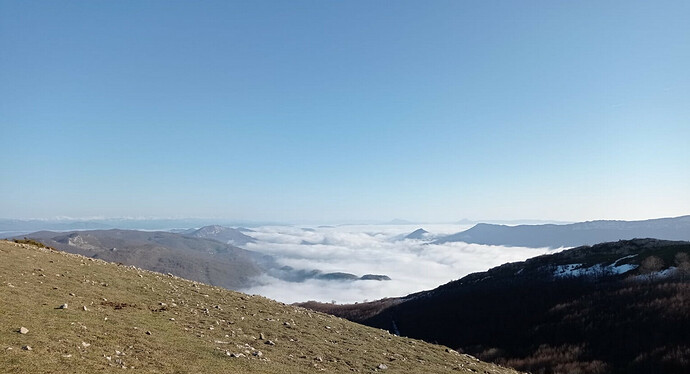
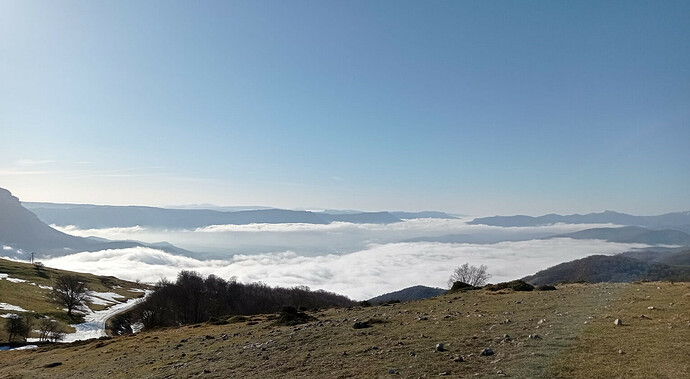
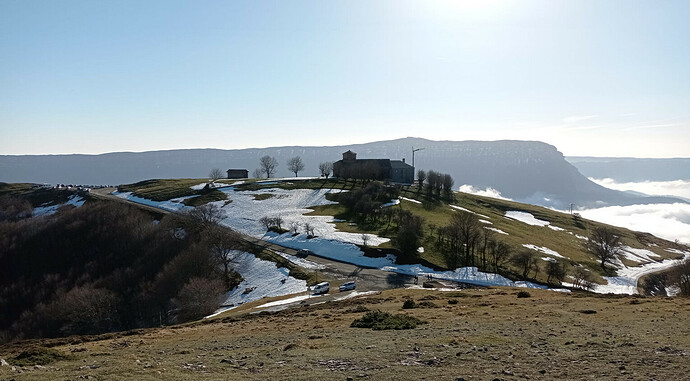
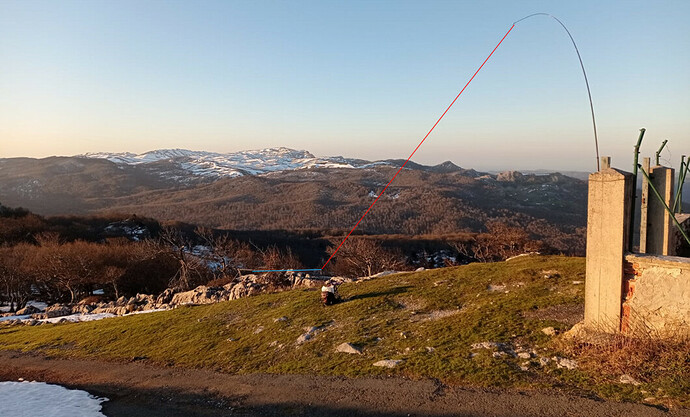
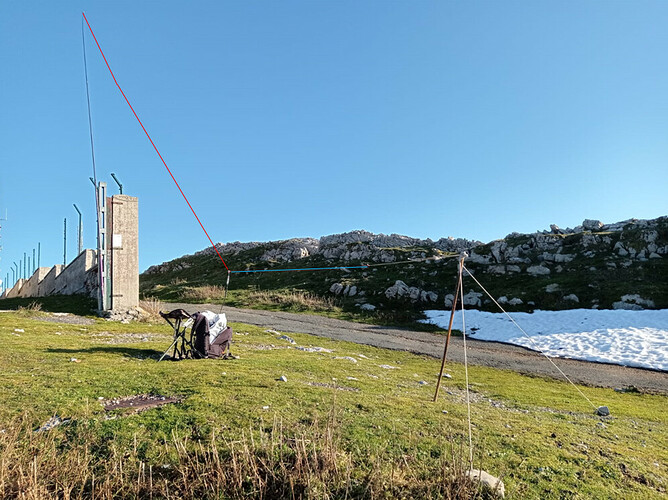
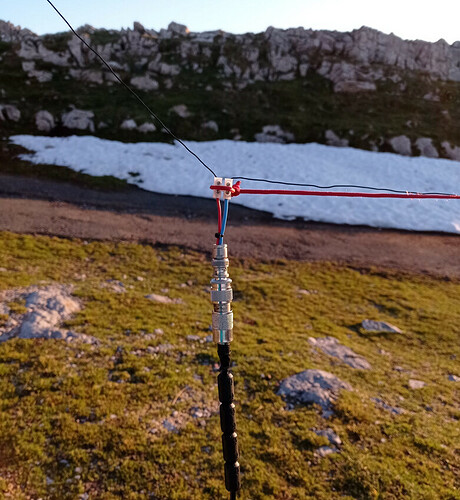
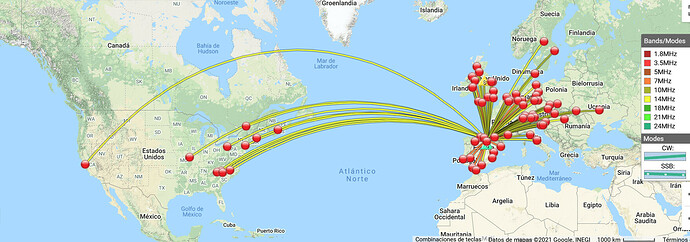
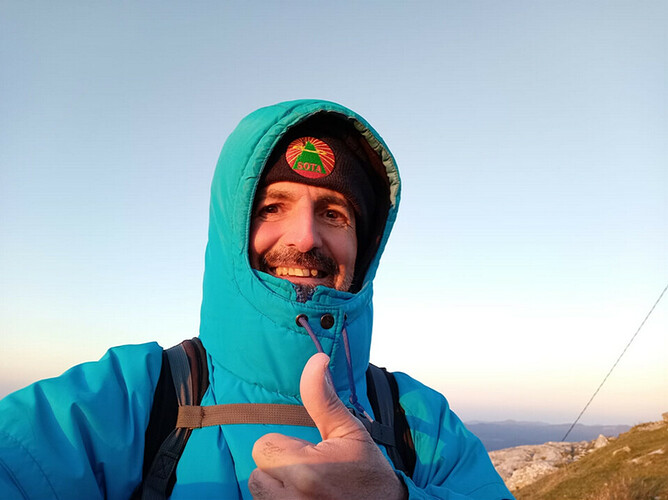



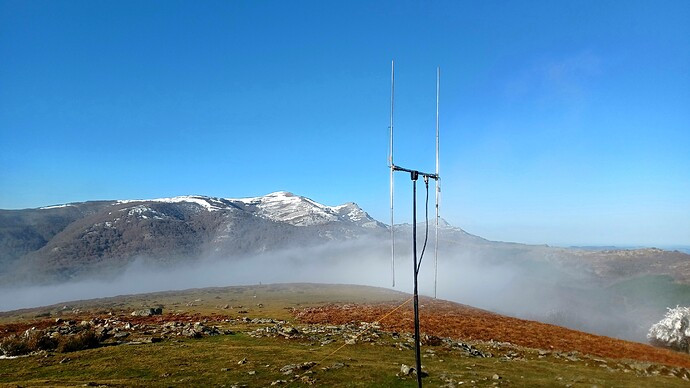
 Oh, and having processed an ADIF file with a years worth of contacts recently for a ‘big gun’ ham in Europe I can confirm that even the big stations struggle with West Coast.
Oh, and having processed an ADIF file with a years worth of contacts recently for a ‘big gun’ ham in Europe I can confirm that even the big stations struggle with West Coast.